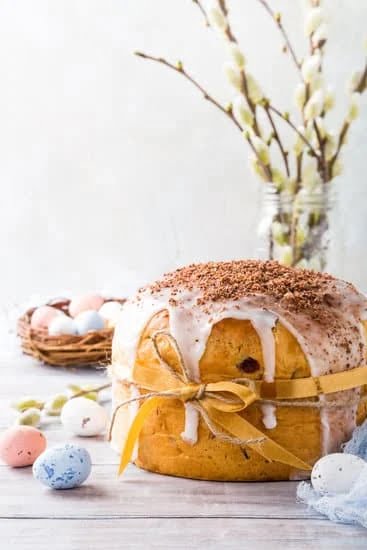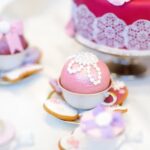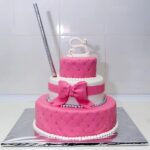Are you interested in learning how to do basket weave cake decorating? If so, you’ve come to the right place. This article will provide you with a comprehensive guide on everything you need to know about creating beautiful basket weave designs on your cakes. From the tools and materials needed to troubleshooting common issues, we’ve got you covered.
Basket weave cake decorating is a popular technique that adds texture and visual interest to cakes. It involves creating a woven pattern that resembles a traditional basket, giving your cake a unique and elegant look. Whether you’re an experienced baker or just starting out, mastering the art of basket weave cake decorating can take your baking skills to the next level.
In this article, we will cover all the essential information you need to get started with basket weave cake decorating. We’ll discuss the tools and materials needed, how to prepare your cake for decorating, a step-by-step guide to creating the basket weave pattern, tips and tricks for perfecting your technique, alternative styles and designs, troubleshooting common issues, and adding final decorations to showcase your beautifully decorated basket weave cake.
So let’s dive in and discover the art of basket weave cake decorating.
Tools and Materials Needed for Basket Weave Cake Decorating
When it comes to basket weave cake decorating, having the right tools and materials is essential to achieving the desired look. To start off, you will need a few basic items such as a turntable, offset spatula, piping bags, couplers, and icing tips. The turntable will allow you to easily rotate the cake while decorating, while an offset spatula will come in handy for spreading and smoothing the icing.
In addition to these basic tools, you will also need a few specific materials for creating the basket weave pattern. This includes a medium consistency buttercream or royal icing, which should be tinted to your desired color using gel food coloring.
For the actual basket weave design on the cake, you will need a basket weave piping tip such as Wilton’s #47 or #48. These tips are specifically designed to create the distinctive woven texture of a basket on your cake.
When it comes to choosing your materials for basket weave cake decorating, quality matters. Invest in good quality piping bags that won’t burst under pressure and durable icing tips that will help you achieve clean and precise lines. Using high-quality ingredients for your buttercream or royal icing is also important for achieving the right consistency and texture needed for this technique.
Overall, having the right tools and materials is crucial for successful basket weave cake decorating. By ensuring that you have all the necessary items at hand, you can set yourself up for success as you work on perfecting your technique.
Getting Started
When preparing to decorate a cake with the basket weave technique, it is important to start with a well-prepared cake. This means that the cake should be leveled and crumb-coated before beginning the decorating process. Leveling ensures that the top of the cake is even and flat, while crumb-coating helps to seal in any loose crumbs and provides a smooth surface for the final decorations.
Once your cake is properly prepared, you will need to gather all the necessary tools and materials for basket weave cake decorating. This includes a turntable, offset spatula, piping bags, couplers, basket weave piping tips (such as tip #47 or #48), and a sturdy icing consistency that will hold its shape. It’s also important to have plenty of frosting on hand, as creating the basket weave pattern can use up quite a bit of icing.
Before you begin decorating, it’s helpful to have a plan in mind for your design. Consider the size and shape of your cake, as well as any color scheme or theme you want to incorporate into your basket weave pattern.
This will help guide your decorating process and ensure that you achieve the look you desire. Now that you have your tools and materials ready, it’s time to dive into the step-by-step process of creating a beautiful basket weave pattern on your cake.
To learn how to do basket weave cake decorating, follow these steps carefully:
- Start by applying a thin layer of frosting around the sides of your crumb-coated cake.
- Divide your remaining frosting into two portions – one for creating vertical lines and one for horizontal lines in our basket weave pattern.
- Load one piping bag with the frosting for vertical lines using a basket weave tip.
- Pipe evenly spaced vertical lines around the sides of your cake.
- Switch out for another piping bag loaded with horizontally striped frosting using another basketweave tip.
- Pipe horizontal stripes across each set of vertical lines.
Now that we’ve covered how to get started preparing your cake for basket weave decorating let’s move on to actually going through this decoration process.
Step-by-Step Guide to Creating the Basket Weave Pattern
Creating a basket weave pattern on a cake may seem daunting at first, but with the right technique and practice, you can achieve a beautiful design that will impress your friends and family. In this section, we will provide a step-by-step guide on how to do basket weave cake decorating.
To start, you will need to have your cake already prepared and crumb coated. Make sure to have a batch of buttercream frosting ready as well as a decorating bag fitted with a basket weave piping tip. The most commonly used tips for basketweave designs are #47 and #48, however you can use any tip that has parallel lines or sets of holes.
- Begin by piping vertical lines evenly spaced around the sides of the cake. Use steady pressure and keep the lines straight.
- Next, take a clean offset spatula or bench scraper and gently smooth over the piped lines to create an even surface.
- Now it’s time to create the horizontal lines. Start by piping short horizontal lines over the vertical lines, making sure to cover each starting point and ending point of the vertical lines.
Remember that practice makes perfect when it comes to basket weave cake decorating. Don’t be discouraged if your first attempt doesn’t turn out exactly as planned – keep practicing, and soon you’ll be creating beautiful basket weave designs with ease.
| Tool | Usage |
|---|---|
| Basket Weave Piping Tip | To create the woven pattern |
| Buttercream frosting | For creating the design |
| Offset spatula or bench scraper | To smooth out piped lines |
Tips and Tricks for Perfecting Your Basket Weave Technique
When it comes to basket weave cake decorating, there are several tips and tricks that can help you perfect your technique and create a stunning finished product. Here are some key pointers to keep in mind as you work on your basket weave cake design:
- Use the right consistency of icing: The key to a successful basket weave pattern is using the right consistency of frosting. You’ll want it to be stiff enough to hold its shape, but still smooth enough to pipe easily. If your icing is too stiff, it can be difficult to pipe, and if it’s too soft, your pattern may not hold up.
- Practice proper pressure control: When piping the basket weave pattern onto your cake, it’s important to maintain consistent pressure with your piping bag. This will help ensure that the lines are even and uniform throughout the design.
- Keep your lines straight: One of the most important aspects of a beautiful basket weave pattern is straight lines. Take your time and focus on keeping each line as straight as possible for a clean and professional look.
In addition to these general tips, there are also some specific techniques that can help elevate your basket weave cake decorating skills:
- Experiment with different piping tips: While a small round tip is commonly used for basket weave patterns, don’t be afraid to try out different tips for varying textures and designs.
- Add depth with color: To create visual interest in your basket weave design, consider using multiple colors of frosting. This can add dimension and depth to the pattern, making it stand out even more on the cake.
- Practice patience: Basket weaving takes time and precision, so don’t rush the process. Take breaks when needed and focus on maintaining steady hands and attention to detail.
By incorporating these tips and techniques into your basket weave cake decorating process, you’ll be well on your way to creating beautifully intricate designs that will impress everyone who sees-and tastes-your creations.
Alternative Basket Weave Cake Decorating Styles and Designs
When it comes to basket weave cake decorating, there are endless possibilities for creating unique and beautiful designs. While the classic basket weave pattern is timeless, there are alternative styles and designs that can add a modern twist to your cake decorating.
Diagonal Basket Weave
One alternative style to the traditional basket weave is the diagonal basket weave. This technique involves piping diagonal lines across the cake in one direction, and then crossing over with diagonal lines in the opposite direction to create a crisscross pattern. The result is a visually stunning design that adds an extra element of interest to your cake.
Textured Basket Weave
For those looking for a more rustic and textured look, the textured basket weave technique is a great option. This involves using a small offset spatula or a comb tool to create texture in the buttercream as you pipe the basket weave pattern. The result is a beautifully textured finish that adds depth and dimension to your cake.
Color Variation
Another way to switch up your basket weave cake decorating is by incorporating different colors into the design. You can achieve this by using multiple shades of buttercream or by adding edible food coloring to create an ombre effect. This adds a pop of color and visual interest to your cake, making it stand out even more.
By experimenting with these alternative styles and designs, you can elevate your basket weave cake decorating and create show-stopping cakes that are sure to impress. Whether it’s adding texture, playing with color, or trying out new patterns, there are countless ways to put your own creative spin on this classic decorating technique.
Troubleshooting Common Issues in Basket Weave Cake Decorating
Even with the best of intentions and careful preparation, issues can still arise when it comes to basket weave cake decorating. Knowing how to troubleshoot common problems can help you salvage your cake and create a stunning finished product.
One common issue that decorators encounter is the icing consistency. If your icing is too stiff, you’ll struggle to create smooth, even lines in your basket weave pattern. On the other hand, if your icing is too runny, it will be difficult to maintain the structure of your design. The key here is finding the right balance – you want your icing to be firm enough to hold its shape but still pliable for easy piping.
Another potential problem area is uneven spacing in your basket weave pattern. This can happen if you’re not paying close attention as you pipe or if you try to rush through the process. To avoid this issue, take your time and work methodically across the surface of the cake. Use a ruler or a straight-edged tool to mark out even lines before you begin piping, ensuring that your pattern remains consistent throughout.
Finally, air bubbles in your icing can create unsightly blemishes in your basket weave design. To prevent this, make sure to properly prepare and store your icing before use. If air bubbles do appear while piping, carefully puncture them with a toothpick or small skewer and smooth over the area with a clean spatula.
| Issue | Troubleshooting Tip |
|---|---|
| Icing Consistency | Adjust consistency by adding more powdered sugar for stiffness or liquid for runniness |
| Uneven Spacing | Use a ruler or straight-edge tool to mark even lines before piping |
| Air Bubbles in Icing | Puncture air bubbles with toothpick and smooth over with spatula |
Finishing Touches
When it comes to basket weave cake decorating, the finishing touches can truly elevate the look of your creation and make it stand out. Adding final decorations and details to your basket weave cake allows you to personalize and customize the design according to the occasion or theme. From simple embellishments to more intricate designs, there are numerous ways to put the perfect finishing touches on your basket weave cake.
Adding Edible Flowers and Greenery
One beautiful way to enhance the appearance of a basket weave cake is by adding edible flowers and greenery. Fresh flowers, such as roses, daisies, or lavender, can be used to adorn the top of the cake or cascade down the sides for a romantic and elegant look. Alternatively, you can create delicate green leaves from fondant or gum paste and strategically place them around the cake for a natural and vibrant touch.
Detailing With Piping
Piping details can add depth and dimension to your basket weave cake. Use different piping tips to create intricate patterns, borders, or even small designs on the cake surface. You can pipe delicate swirls, rosettes, or lattice patterns in between the woven sections of the basket weave for an eye-catching finish.
Personalized Cake Toppers
For a special occasion or celebration, consider adding personalized cake toppers as the final touch to your basket weave cake. Whether it’s a custom message, monogram initials, or thematic figurines related to the event (such as baby booties for a baby shower), carefully chosen cake toppers can tie together the entire presentation and make your creation unforgettable.
These finishing touches allow you not only showcase your beautifully decorated basket weave cake but also truly make it unique and memorable for any special occasion. The personalization adds an extra layer of charm and elegance that will leave a lasting impression on anyone who sees it.
Conclusion
In conclusion, mastering the art of basket weave cake decorating can add a beautiful and professional touch to your cakes. With the right tools and materials, proper preparation, and a step-by-step guide, you can create stunning basket weave designs that will impress your friends, family, and clients. By following the tips and tricks for perfecting your basket weave technique, you can ensure that your cakes are not only visually appealing but also delicious.
Once you have mastered the traditional basket weave design, don’t be afraid to explore alternative styles and designs to truly showcase your creativity. Whether it’s adding different colors or incorporating additional decorations, there are endless possibilities for incorporating basket weave techniques into your cake decorating repertoire.
Additionally, it’s important to remember that troubleshooting common issues in basket weave cake decorating is a normal part of the process. Don’t be discouraged by any mishaps – use them as learning opportunities to improve your skills.
Finally, adding final decorations and details will truly elevate your beautifully decorated basket weave cake and make it an eye-catching centerpiece for any special occasion. With practice and patience, you can become a pro at creating stunning basket weave cakes that will leave a lasting impression on everyone who sees (and tastes) them.
Frequently Asked Questions
How to Do Basket Weaving on a Cake?
To create a basket weaving effect on a cake, you’ll need to start with a crumb-coated cake. Use a piping bag fitted with a basket weave tip to pipe horizontal lines around the sides of the cake, then pipe vertical lines over the horizontal ones, alternating to create the woven look.
What Tip Do You Use for Basket Weave Cake?
The best tip to use for basket weave cake is a basket weave piping tip, typically a Wilton tip #47 or #48. This tip is specifically designed to create the crisscross pattern resembling a traditional basket weave when decorating cakes.
How Do You Make Lattice With Icing?
Making lattice with icing involves using a piping bag fitted with a round tip or a small writing tip to pipe thin lines of icing onto the surface of the cake in a crisscross pattern. Start by piping evenly spaced vertical lines across the cake, then add horizontal lines intersecting with the vertical ones to form the lattice design.

Welcome to our cake decorating blog! My name is Destiny Flores, and I am the proud owner of a cake decorating business named Cake Karma. Our mission is to provide delicious, beautiful cakes for all occasions. We specialize in creating custom cakes that are tailored specifically to each customer’s individual needs and tastes.





